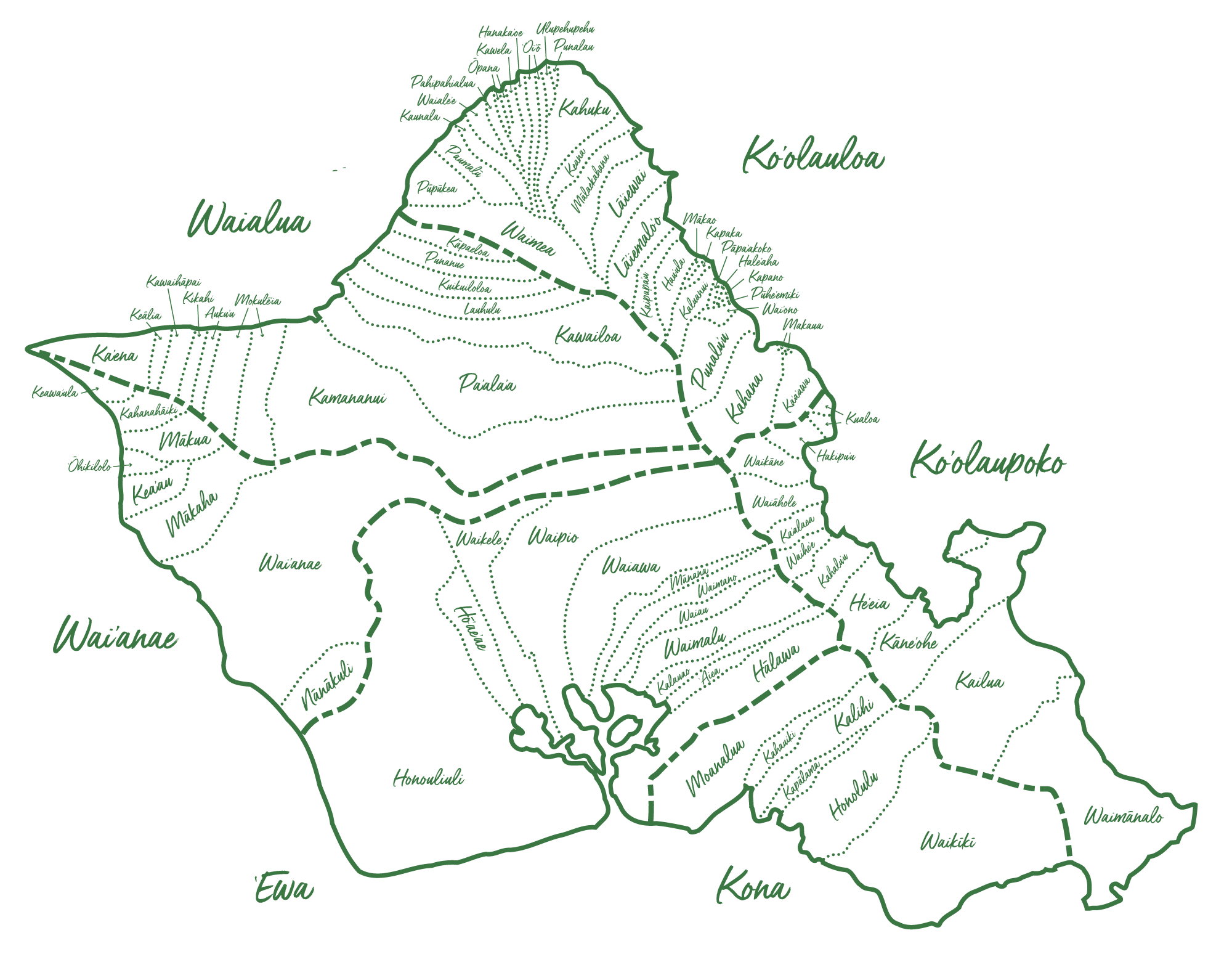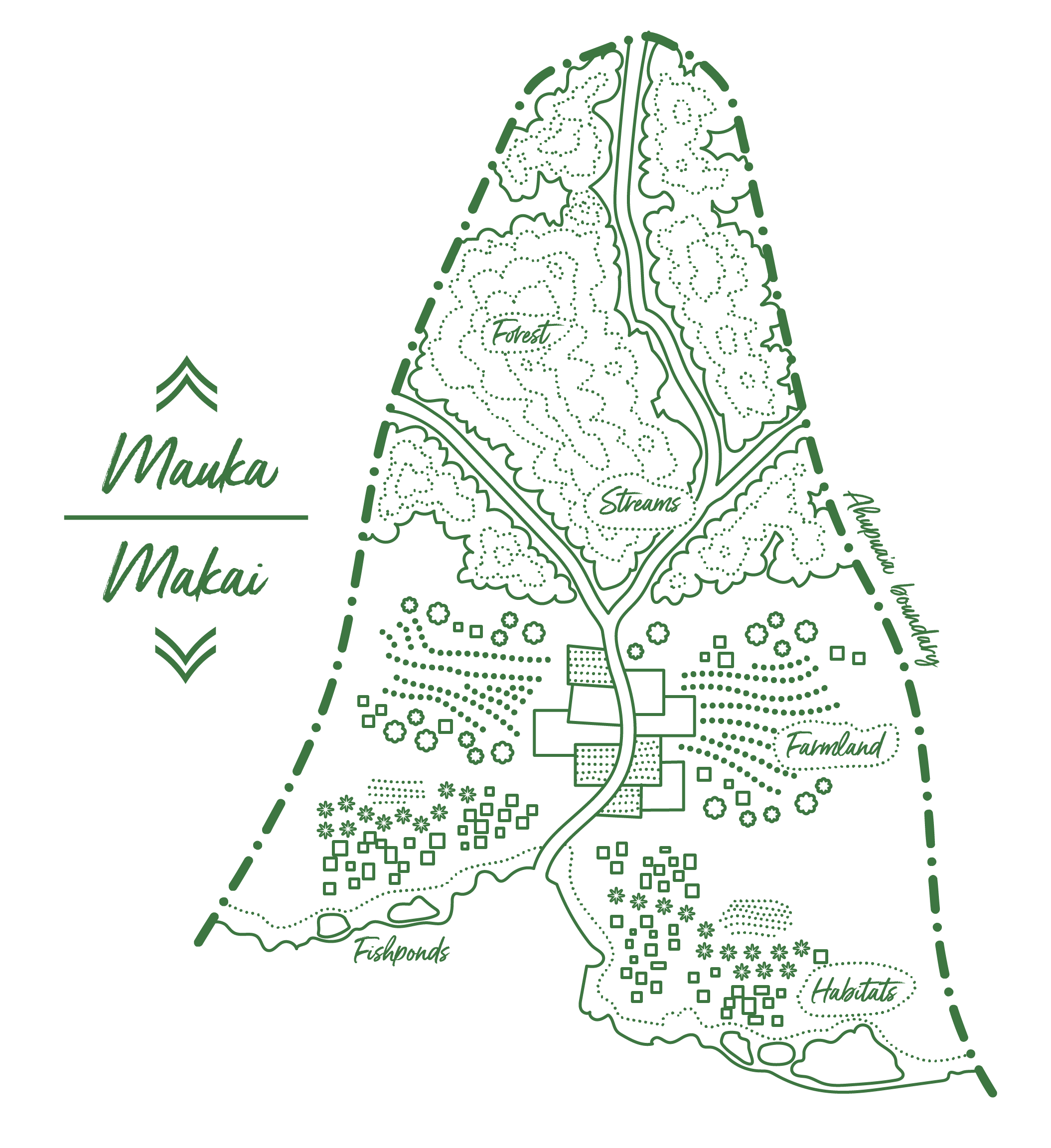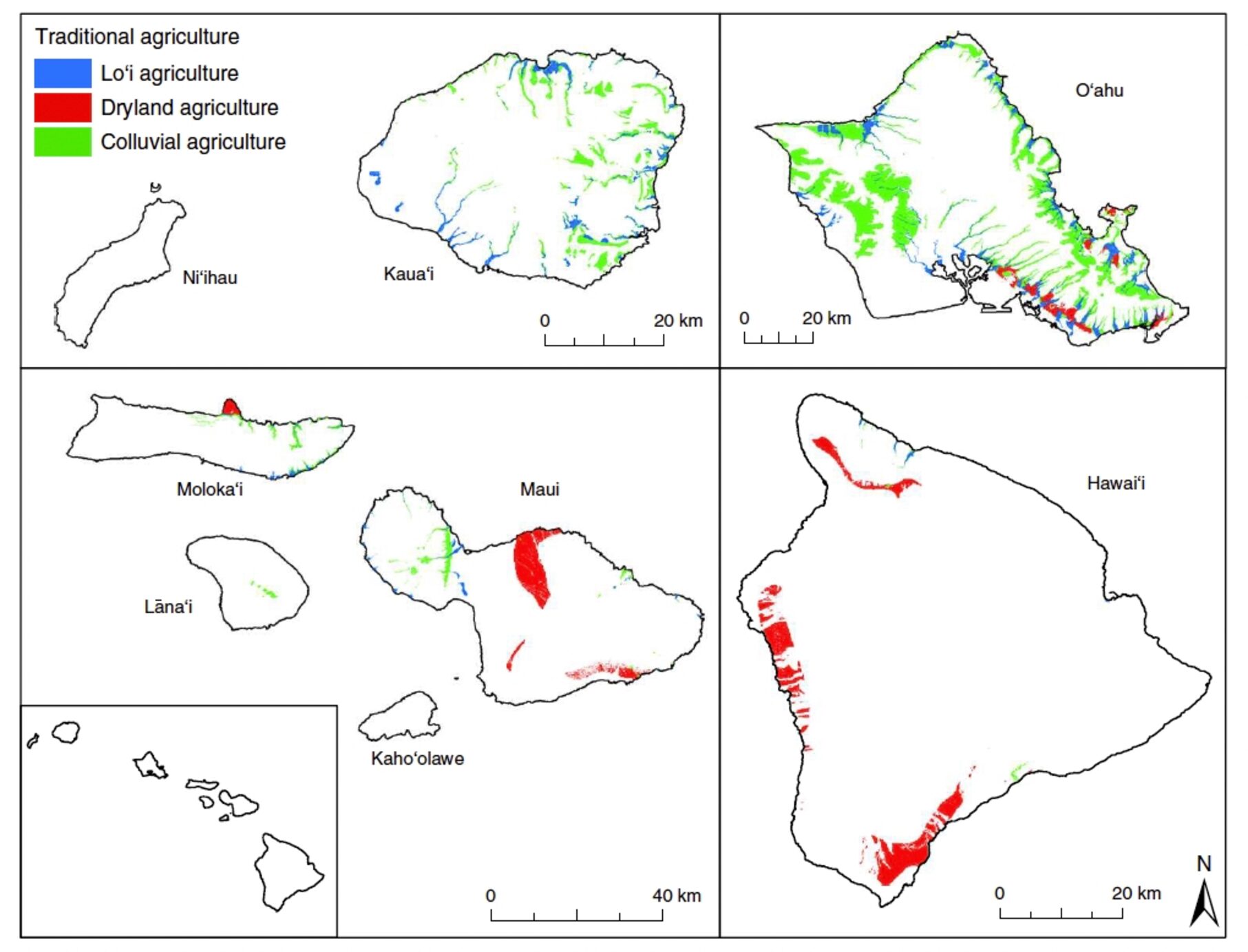The ahupua’a is much more than just an ancient land division. It is a traditional Hawaiian practice for integrated resources management. Prior to European contact there were 800,000 Hawaiians living in the islands with little to none of the environmental and resource issues that we face today. Presently, Hawaii’s population of 1.4 million is confronted with serious environmental and resource issues including food insecurity, limited water resources, destruction of coral reefs due to runoff and other causes, species loss, and de-forestation. The ahupua’a could serve as a model for integrated resources management and community-based decision-making that would help to restore nature from mauka to makai, strengthen the community’s food security, and greatly improve the community’s quality of life.
In a seminal article on the subject, David Blane and Christopher Chung define the ahupua’a as follows:
“…the ahupua‘a is an ancient land division that runs from the top of the mountain to the sea. The word ahupua‘a is derived from ‘ahu,’ an altar of stones, upon which was placed an image of the head of a pua‘a, or pig that served as boundary markers. However, as you may already have surmised, the ahupua‘a means much more. The ahupua‘a embodies a unique relationship between the Hawaiian people and the land as well as the practical and rational approaches applied to insure the sustainability of the natural environment from overexploitation, pollution, and extinction.”
Blane and Chung also note that the ahupua’a concept is “a practical and rational approach to resources management that conforms with the existing geography and its resources rather than altering them for human convenience.” They give as an example how swampy land areas were used in their natural state for wetland agriculture and dry land regions were used for growing more drought-tolerant crops such as sweet potato. The need to alter the land and divert water was thus minimized. Ahupua’a practices involved a reciprocal approach to the use of resources. For instance, when a koa tree was cut down to build a canoe, ten more young koa trees were planted to take its place in order to ensure the preservation of this resource, to maintain the integrity of the watershed, and to prevent erosion.
Potential productive capacity of indigenous agricultural lands
For those who may think that it’s too late, development has degraded Hawaii’s natural environment beyond repair, a study on The potential of indigenous agricultural food production under climate change in Hawaiʻi is informative. The authors found that:
- Carrying capacity estimates support hypotheses of large pre-colonial Hawaiian populations (>800,000).
- Urban development has reduced (−13%) traditional agroecosystems but 71% remain agriculturally zoned.
The authors classify indigenous Hawaiian agriculture into three broad systems:
- Intensive loʻi (wetland taro fields);
- Dryland agriculture; and
- Extensive rainfed systems, with colluvial agriculture representing one of the most widespread and common extensive rainfed systems
The study highlights the food-producing potential of indigenous agriculture even under land-use and climate changes, and the value of their restoration into the future. Their results suggest that indigenous agricultural systems in Hawaiʻi could have produced a total of >1.02 million metric tons (mt) of food per year, with loʻi contributing about 25%, dryland providing 47% and colluvial agriculture supplying 28% of the total production. Based on their estimates, this annual production could have yielded about 1.34 billion kilocalories annually, which could support a theoretical maximum population of over 1.2 million people per year, with dryland systems supporting the majority of the population, 46%, loʻi providing for 28% and colluvial systems 26% of the total carrying capacity.
Sources:
David W. Blane, State of Hawaii, Office of Planning, Christopher G. Chung, Office of Planning, Hawaii Coastal Zone Management Program, The Ahupua‘a as a Traditional Hawaiian Resource Management Model for a Sustainable Coastal Environment, https://nsgl.gso.uri.edu/oresu/oresuc00002/pdffiles/papers/049.pdf
Natalie Kurashima, Lucas Fortini, Tamara Ticktin, The potential of indigenous agricultural food production under climate change in Hawaiʻi, Nature Sustainability, https://doi.org/10.1038/s41893-019-0226-1
We are a non-profit organization dependent on grant funds and donations. To help us continue this work, please consider making a donation by clicking on the donate button below. Your gift is tax deductible.




